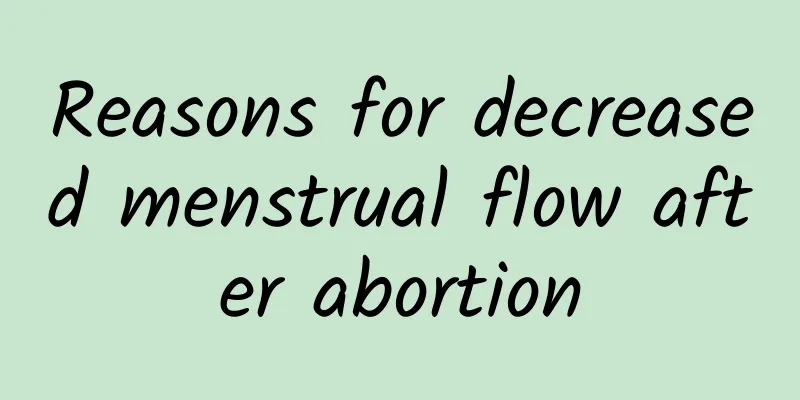Reasons for decreased menstrual flow after abortion

|
There are many reasons why patients have less menstrual volume after abortion. After abortion, patients may have insufficient endometrial hyperplasia due to endometrial damage, uterine cavity adhesions, endocrine system dysfunction, and incomplete curettage during surgery, which leads to reduced menstrual volume. Damage to the uterine lining Excessive curettage during abortion surgery or multiple abortions can cause damage to the patient's endometrium, resulting in complete or partial loss of the endometrium in the uterine cavity, which can prevent the endometrium from exfoliating cyclically normally and cause scanty menstruation after abortion. Uterine adhesions The endometrium is damaged during abortion and curettage, and adhesions may occur after the operation. If adhesions occur in the patient's uterine cavity, there may be different manifestations depending on the degree of adhesion. A large adhesion range may cause amenorrhea, while a small adhesion range may cause less menstrual flow after abortion. Endocrine disorders After abortion, patients may have endocrine system dysfunction, hypopituitarism, insufficient ovarian estrogen secretion, insufficient endometrial hyperplasia, and thin endometrium, resulting in less bleeding during menstruation and less menstrual flow. Long-term use of contraceptives can inhibit pituitary function, resulting in insufficient estrogen secretion and reduced menstrual flow after abortion. Incomplete curettage A small number of patients may experience amenorrhea or scanty menstruation after miscarriage due to incomplete curettage and residual placenta and other tissues in the endometrium. In this case, another curettage can restore the patient's menstruation to normal. |
<<: Attention should be paid to daily care of patients after abortion
>>: Artificial induction is more suitable for mid-pregnancy
Recommend
What should be checked for amenorrhea
Amenorrhea requires examination of hormone levels...
What are the common symptoms of pelvic inflammatory disease?
Pelvic inflammatory disease is mainly divided int...
What is an ovarian cyst?
What is an ovarian cyst? Are there obvious sympto...
If you eat too much barbecue during the Mid-Autumn Festival, you may become a "belly enemy"! Traditional Chinese Medicine: To prevent the fall, remember these three tips to remove oil
Celebrate the Mid-Autumn Festival happily and dev...
What are the 4 signs of uterine fibroids? What are the symptoms of uterine fibroids?
Uterine fibroids are one of the common gynecologi...
What does functional uterine bleeding mean?
Dysfunctional uterine bleeding is a type of abnor...
Why does endometrial thickening disease recur?
Why does endometrial thickening disease recur? Th...
Congenital absence of vagina diet care
What are the aspects of dietary care for congenit...
What are the precautions for uterine myomectomy?
Correctly understanding the precautions of hyster...
The most effective hospital for treating vaginitis
Clinically, there are many treatment measures for...
Common clinical manifestations of acute adnexitis
Adnexitis is one of the most common diseases in w...
How to improve the cure rate of abortion
Abortion is undoubtedly a huge blow to many femal...
The harm of cervical hypertrophy to female friends
Cervical hypertrophy is a common gynecological in...
Experts tell you, what are the main preventive measures for common cervicitis?
Do you know what are the main preventive measures...
What is the main cause of cervical hypertrophy?
What are the causes of cervical hypertrophy? Cerv...









